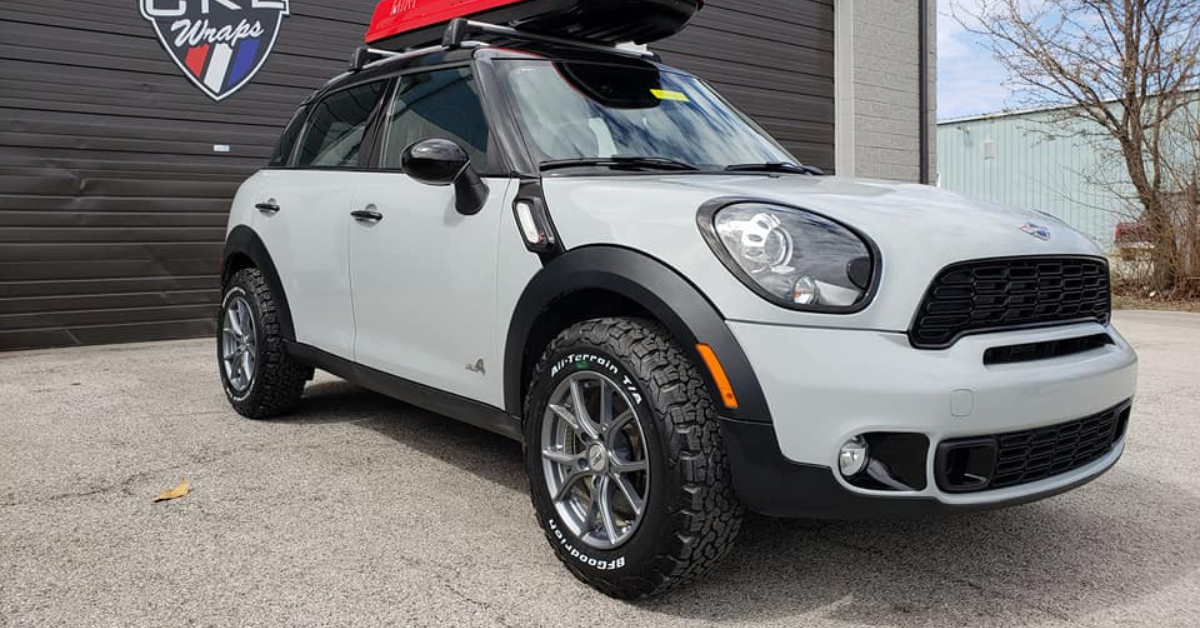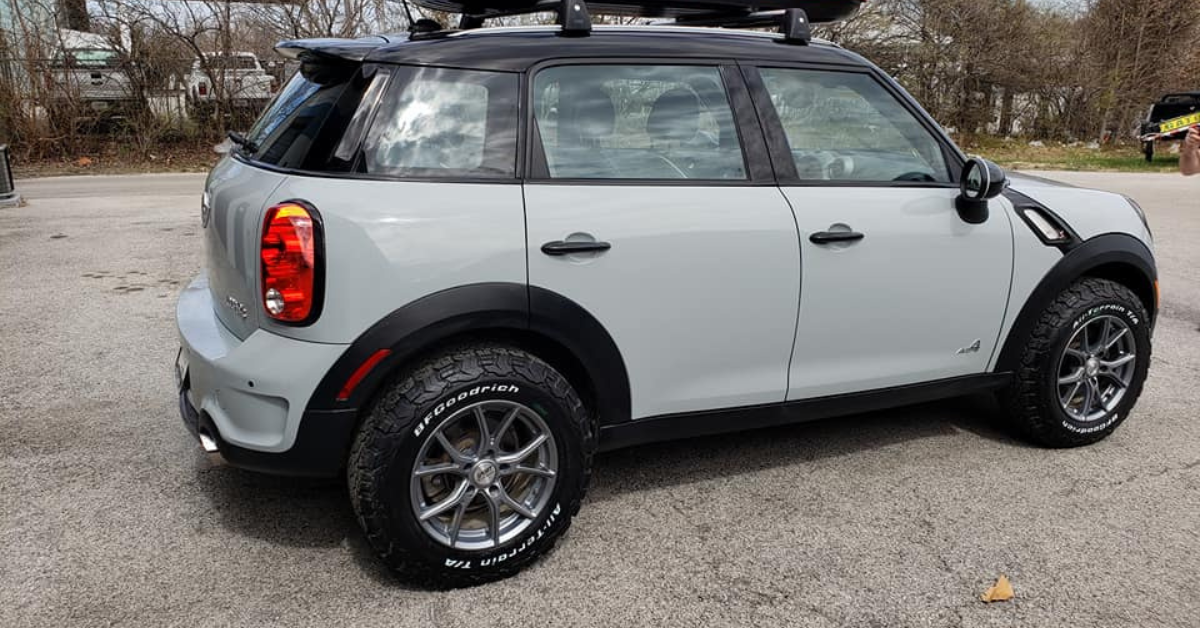
To ensure your Paint Protection Film (PPF) lasts, clean it regularly using gentle products. Rinse with water, wash with mild detergent, and dry with a soft cloth. Use products designed for PPF and avoid harsh chemicals. Inspect for damage, especially in impact-prone areas. Park in shaded spots to shield from sunlight and environmental hazards. Professional installation is essential for longevity. Address minor damages promptly with suitable products. Understand warranty coverage for yellowing or peeling. Following these steps can help maintain your PPF effectively and protect your vehicle’s paint. More insights on PPF care await you.
Key Takeaways
- Regularly clean PPF with gentle products to maintain clarity and protect the film.
- Choose pH-balanced soaps and specialized cleaners designed for PPF maintenance.
- Conduct routine inspections for damage, focusing on impact-prone areas like the front bumper.
- Avoid harsh chemicals, abrasive scrubbing, and exposure to environmental hazards to prolong PPF lifespan.
- Handle minor damages promptly with appropriate products and techniques to aid self-healing.
Proper Cleaning Techniques
To maintain the longevity of your PPF, make sure you clean it regularly using gentle, non-abrasive products recommended by the manufacturer. The first step in properly cleaning your Paint Protection Film (PPF) is to rinse the surface with water to remove any loose dirt or debris. Once the film is free of loose particles, use a mild automotive detergent mixed with water to gently wash the PPF. Avoid using harsh chemicals or abrasive materials, as these can damage the film’s protective properties.
After washing the PPF with the detergent solution, rinse it thoroughly with clean water to remove any soap residue. It’s essential to confirm all soap is completely washed off to prevent streaking or buildup on the film. Once rinsed, use a soft microfiber cloth to dry the PPF gently. Avoid using rough towels or sponges that could scratch the surface.
For stubborn contaminants like bird droppings, bug splatter, or tree sap, consider using a specialized PPF cleaner recommended by the manufacturer. These cleaners are formulated to effectively remove tough stains without compromising the integrity of the film. Always follow the manufacturer’s instructions when using these products to achieve the best results.
Choosing the Right Products
Selecting appropriate cleaning products is vital for maintaining the effectiveness and longevity of your Paint Protection Film (PPF). When choosing products for your PPF, opt for those specifically designed for use on clear coats or PPF. Look for pH-balanced soaps or specialized PPF cleaners that are free from harsh chemicals like bleach or ammonia. These chemicals can degrade the film over time, reducing its protective abilities and clarity. Additionally, make sure that the products you choose are non-abrasive to prevent dulling of the PPF surface.
It is essential to avoid using household cleaners, such as glass cleaners or multi-purpose sprays, as they often contain ingredients that can damage the PPF. Instead, invest in high-quality microfiber cloths for gentle cleaning. Microfiber cloths are soft and non-abrasive, making them ideal for maintaining the PPF without causing scuffs or swirl marks.
When it comes to selecting a wax or sealant for your PPF, opt for products that are specifically formulated for use on paint protection films. These products provide an additional layer of protection and can enhance the longevity of your PPF. Be sure to follow the manufacturer’s recommendations for application and reapplication intervals to ensure the best performance.
Regular Inspections
When it comes to maintaining the longevity of your PPF, visual checks for damage and adhering to a preventive maintenance schedule are essential.
Inspecting your PPF regularly allows you to catch any issues early on, preventing them from escalating.
Visual Checks for Damage
Conducting routine visual inspections is essential to ensure the durability and longevity of your PPF. Start by examining the entire surface for any signs of damage, such as scuffs, peeling, or discoloration. Focus on areas prone to impact, like the front bumper and hood.
Check for any trapped dirt or debris that could potentially cause abrasions to the film. Inspect the edges for lifting or separation, as these areas are more susceptible to wear and tear. Additionally, look out for bubbles or air pockets, which may indicate improper installation or damage.
Preventive Maintenance Schedule
Establishing a preventive maintenance schedule with regular inspections is key to maintaining the longevity of your PPF. By conducting routine checks, you can be assured that your paint protection film is always in prime condition.
Schedule inspections every three to six months or more frequently if your vehicle undergoes heavy use or exposure to harsh elements. During these inspections, carefully examine the PPF for any signs of damage, such as swirl marks, tears, or discoloration. Pay special attention to high-impact areas like the front bumper, hood, and side mirrors.
Promptly address any issues to prevent further damage and maintain the effectiveness of the PPF. Regular inspections are essential for keeping your PPF looking great and providing maximum protection for your vehicle.
Avoiding Harsh Chemicals
When cleaning your PPF, it’s important to steer clear of harsh chemicals that can damage the protective film. Opt for chemical-free cleaning solutions and gentle maintenance tips to preserve the integrity of your PPF.
Harsh chemicals can compromise the durability and appearance of your PPF, so it’s vital to choose safe alternatives for maintaining its longevity.
Chemical-Free Cleaning
Prioritize the use of gentle, sustainable solutions with chemical-free cleaning methods to maintain the longevity of your PPF.
When cleaning your PPF, opt for mild soaps or specialized PPF cleaners that are free from harsh chemicals like bleach or ammonia. These chemicals can degrade the protective properties of the film over time. Instead, consider using a mixture of water and mild soap or a designated PPF cleaner applied with a soft microfiber cloth.
Avoid abrasive scrubbing pads or harsh chemicals that can weaken the PPF’s protective layer.
Gentle Maintenance Tips
For gentle maintenance of your PPF, focus on using sustainable and mild cleaning solutions to avoid harsh chemicals that could safeguard its protective properties.
When cleaning your PPF, opt for pH-neutral soaps or specifically formulated PPF cleaners. These gentle options effectively remove dirt, grime, and other contaminants without causing damage.
Avoid household cleaners containing solvents, bleach, or abrasives, as these can degrade the PPF over time. Additionally, steer clear of using stiff brushes or rough scrubbing pads, as they may scratch the PPF surface.

Parking Considerations
Consider positioning your vehicle within the designated parking area to ensure maximum protection for your PPF. Parking under a shade or in a garage is highly recommended to shield your paint protection film from prolonged exposure to sunlight. Direct sunlight can degrade the PPF over time, reducing its effectiveness in safeguarding your vehicle’s paint.
Avoid parking too close to other vehicles to prevent accidental marks or dings that could damage the PPF. Additionally, be mindful of parking near areas where construction or industrial work is taking place, as debris and particles in the air can potentially harm the film.
When parking, try to choose spots that minimize exposure to environmental hazards like tree sap, bird droppings, and road debris. These substances can be corrosive and difficult to remove, potentially causing damage to the PPF if left untreated for too long.
Furthermore, be cautious of parking in areas where the risk of vandalism or theft is higher. Ensuring your vehicle is parked in a secure location can help prevent intentional damage to the PPF and other parts of your car.
Professional Installation Importance
To ensure the longevity and effectiveness of your paint protection film (PPF), the professional installation of the film is essential. When it comes to PPF, the expertise, and precision of a professional PPF installer can make a significant difference in how well the film adheres to your vehicle’s surface and how effectively it provides protection. Professional installers have the knowledge and experience to ensure that the film is applied correctly, without any creases, bubbles, or gaps that could compromise its performance.
Professional PPF installation also involves the use of specialized tools and techniques that aren’t readily available to the average consumer. Installers are trained to work with PPF materials effectively, ensuring a smooth and seamless application that enhances both the appearance and durability of the film. Furthermore, professional installers are familiar with the specific characteristics of different types of PPF and can recommend the best product for your vehicle based on factors like your driving habits and the environmental conditions your vehicle is exposed to.
Handling Minor Damages Promptly
How can you proactively address minor damages to your paint protection film (PPF) to maintain its integrity and effectiveness? When you notice small scuffs, swirl marks, or other minor damages on your PPF, it’s essential to address them promptly to prevent further deterioration.
One effective way to handle these issues is by using a mild automotive paint cleaner or polish specifically designed for PPF. Apply the cleaner or polish on the damaged area using a soft microfiber cloth, following the product instructions carefully. Gently buff the product onto the affected area in a circular motion, being cautious not to apply too much pressure.
If the minor damage persists after using a paint cleaner or polish, you can try utilizing a heat gun or a hairdryer on a low setting to soften the PPF. Once the film becomes more pliable, gently massage the damaged area with your fingers to help the material self-heal. Remember to use caution and avoid overheating the PPF, as excessive heat can cause more harm than good.
In addition to these DIY methods, if you’re uncertain about handling minor damages yourself, it’s always advisable to consult a professional PPF installer. They have the expertise and tools to address minor damages effectively while ensuring the longevity of your PPF. By taking proactive steps to address minor damages promptly, you can maintain the appearance and protective qualities of your PPF for years to come.
Understanding Warranty Coverage
Understanding the warranty coverage for your paint protection film (PPF) is vital for maximizing its benefits and ensuring proper protection for your vehicle’s paint surface. PPF warranties typically cover issues like yellowing, cracking, peeling, staining, and hazing. It’s essential to carefully read and comprehend the terms of your PPF warranty to know what’s included and excluded from coverage. Most warranties have specific conditions that must be met to keep the warranty valid. For instance, some warranties may require you to register your PPF with the manufacturer after installation or to have regular maintenance checks done by a professional.
Additionally, warranties often have different coverage periods for various aspects of the PPF. Some parts of the film may be covered for a longer duration than others. It’s important to be aware of these timelines to know when you might need to contemplate reapplying or replacing certain sections of the PPF. If you encounter any issues with your PPF that you believe are covered by the warranty, it’s essential to contact the manufacturer or installer promptly. Waiting too long could result in the issue worsening and potentially not being covered under the warranty.
Conclusion
Now that you know how to keep your PPF in top condition, remember that neglecting these tips may result in premature wear and tear. It’s like neglecting to change the oil in your car – sure, you can get away with it for a while, but eventually, it’ll catch up to you.
So, take care of your PPF like your prized possession, and it’ll last longer than you ever imagined.
At Kolewe Customs, we are dedicated professionals specializing in vehicle wrapping services. We provide reliable and expert services across Jeffersontown, Middletown, and Pewee Valley.
